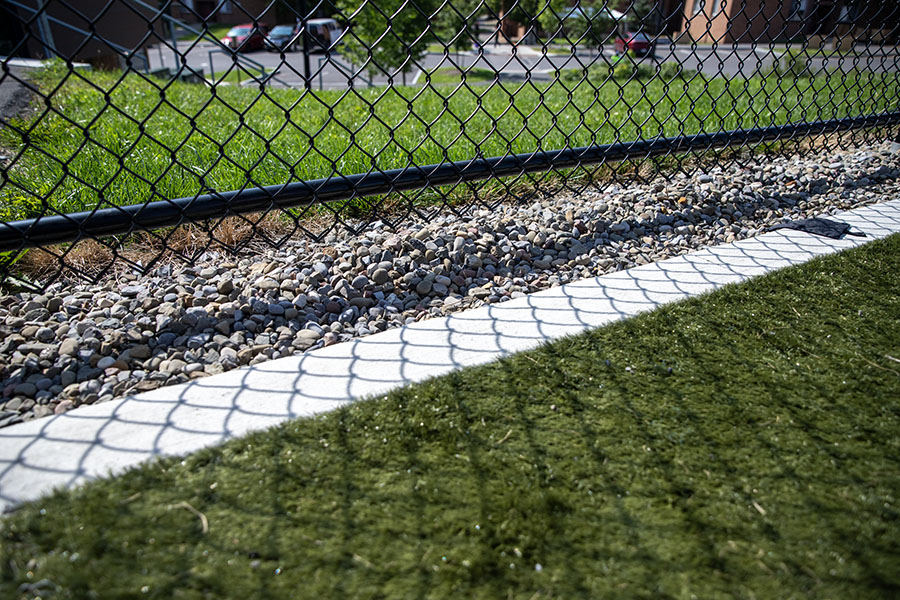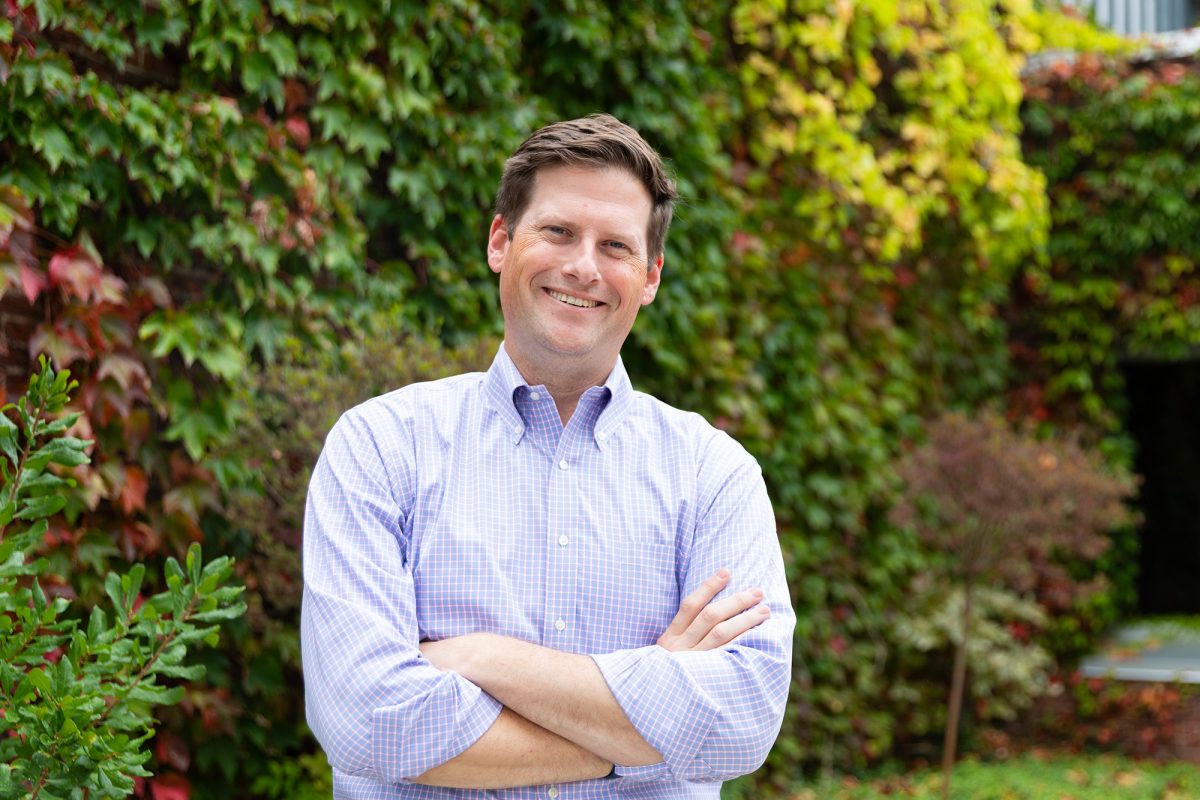Updated Sept. 6
In 2023, Ithaca College faced objections from the local community while constructing a synthetic turf field approved by the Town of Ithaca’s Planning & Development Board. Now in 2024, the City of Ithaca’s planning board will meet Sept. 3 to determine the next steps of Cornell University’s proposal of constructing two synthetic turf fields on its campus.
If the board finds that the turf fields might cause a high environmental risk to the surrounding area, Cornell will be required to research these impacts, according to Yayoi Koizumi, founder of Zero Waste Ithaca, a local environmental organization that is vocal about resisting synthetic turf projects. However, the turf fields will be constructed if the board finds little to no evidence regarding its impact on the environment.
The meeting was originally scheduled in July but because of a lack of a quorum, it was pushed until Aug. 27 and again rescheduled for Sept. 3.
The City of Ithaca Planning and Development Board issued a unanimous negative environmental impact on Cornell’s Meinig Fieldhouse proposal during its Sept. 3 meeting, finding no significant environmental concerns from the proposed project.
Koizumi said in an email that ZWI and other environmental groups in the Ithaca community will continue to fight the decision.
“[The] Cornell athletic department flooded the room with about a hundred Cornell student athletes keeping [protesters] squeezed out,” Koizumi said in an email. “We expect nothing less from Cornell and we will not stop at this.”
Organizations like Zero Waste Ithaca have been protesting synthetic turf since Ithaca College converted Bertino Field at Butterfield Stadium from natural grass to artificial turf. The college upgraded the field after receiving a $3 million donation.
Koizumi said the protests have been necessary to fight for the local community’s health.
“At what expense are we going to pollute our community and other communities … for this?” Koizumi said. “Why can’t we have natural, organically managed grass fields that have better drainage and players have a reasonable playtime? What more do you want at the expense of your own health, your students’ health and at the expense of all these communities that are suffering from the plastic manufacturing and disposal?”
The plan includes constructing the fieldhouse on Tower Road. The plan also includes a 91,950-square-foot outdoor multipurpose synthetic turf field located between the proposed Meinig Fieldhouse and Weill Hall, and a field hockey pitch on Game Farm Road.
Fred Wilcox, chair of the Town of Ithaca’s planning board, said because about 83% of Cornell’s land is located in the city and about 17% is located in the town, both the City of Ithaca and the Town of Ithaca decided that the city should do the environmental review. The review determines the environmental impact of the proposed fields and Meinig Fieldhouse.
Wilcox said that Ithaca College received similar controversy when synthetic turf was installed on its campus, but that he has noticed more outcry regarding Cornell’s Meinig Fieldhouse proposal. He also said the planning boards of each municipality are unsure if the environmental impact is low enough to approve the project.
“So it was not a unanimous decision … indicating that the board was somewhat split on whether there’s the potential for significant environmental impacts,” Wilcox said. “The city will make the ultimate decision.”
ZWI plans to rally outside the Ithaca City Hall before the Sept. 3 planning board meeting. Koizumi said the group has also been collecting signatures for a petition against the Meinig Fieldhouse proposal, with a goal of reaching 1,200 signatures, which they will provide to the planning board as evidence for lack of community support. The petition automatically updates each time a new goal is reached. The group reached its goal of 1,000 signatures and as of Aug. 30, is pursuing a goal of 1,600 signatures.
In 2023, when Ithaca College was preparing to install its second turf field, ZWI held similar protests and sent out a petition to the local Ithaca community with a goal of reaching 1,000 signatures. The group reached 966 signatures.
Koizumi said ZWI began protests too late in the college’s approval process. However, she said the group learned of Cornell’s plans earlier and were able to protest more frequently and attend more planning board meetings.
“It was the first time we were involved in this sort of fight and we were not paying any attention to movements in the town planning board,” Koizumi said. “For Cornell, we’ve been attending the board meetings … and sending in comments and organizing … and working with allies around the country such as Beyond Plastics, Plastic Pollution Coalition and Safe Healthy Playing Fields.”
Koizumi said other environmental organizations have been fighting the turf proposal like Mothers Out Front New York, Cayuga Lake Environmental Action Now! (CLEAN), Sustainable Finger Lakes, Seneca Lake Guardian, Sunrise Ithaca, Extinction Rebellion Ithaca and Cornell on Fire. They take issue with chemicals involved in turf manufacturing as well as chemicals, like polyfluoroalkyl substances (PFAs), microplastics and crumb rubber that can leech from the fields into the environment. A test done on a sample of a synthetic turf blade from 2017 showed the presence of PFOS, a type of PFAs, in a study done by the New Jersey Department of Environmental Protection.
Susan Allen, professor and chair of the Department of the Environment, said crumb rubber can negatively affect the environment if it gets into local waterways because of the chemicals within each piece.
“The real issue is trying to make sure that the tire wear particles stay put by the engineering techniques that are hopefully being applied [on turf fields], because we know that those can be directly toxic,” Allen said. “We want them to stay put. We don’t want there to be a lot of tire wear leachate.”
Turf fields are made of plastic fibers to resemble grass, backing material and an infill — typically of crumb rubber — to balance each fiber in place. Each fiber is made of nylon, polypropylene or polyethylene and can cause potential health risks like heat stress, infection and chemical exposure, according to the New York State Department of Health.
The chemicals in synthetic turf include PFAs in the dye that makes each blade green. Allen said when crumb rubber is used as an infill for synthetic turf fields, they can get washed away from stormwater and can also be brought off the field on people’s shoes. She said she will be conducting research on crumb rubber during fall 2024 with the ecotoxicology lab to determine their impact on water systems.
“We are testing leachate from tire wear particles … on young fish to see if it affects them, and it does, it affects their survival and it affects their behavior,” Allen said. “We’ve also found that the tire wear particles affect other aquatic organisms like daphnia, which are small critters. We find that when we put tire wear particles in with daphnia, their behavior is also modified.”
Drainage systems are one way of decreasing the amount of crumb rubber that can enter the environment. The Bertino Field at Butterfield Stadium has several drainage points surrounding the field, according to Allen. The synthetic fields proposed by Cornell will also have a stormwater strategy and will collect runoff in six major points along and within the fields to catch as much crumb rubber as possible.
The fields will be equipped with filters and detention chambers for stormwater flow, according to Cornell’s proposal that was submitted to the planning board. However, these drains will only be able to filter out the large crumb rubber particles, not PFAs, as previously reported by The Ithacan.
The City of Ithaca’s planning board members have six members who are or who have been affiliated with Cornell. Koizumi said she is nervous the board may decide in Cornell’s favor. Koizumi said that although Cornell has already received approval for other turf fields in the past, she will continue protesting against synthetic turf fields.
“Plastic is toxic,” Koizumi said. “So why are we letting it into our environment?”
Editor’s Note: Zero Waste Ithaca’s petition automatically updates each time a new goal is reached. The group reached its goal of 1,000 signatures and at the time of this reporting, is pursuing a goal of 1,600 signatures.
















DM Woelke • Sep 6, 2024 at 12:40 pm
There is EXTENSIVE existing research that shows the impact of used tire crumb on aquatic organisms. There is also research that shows PFAS and other persistent organic compounds leach from the toxic plastic carpet into air, water and soil. There is research that shows that 2k to 3.2k pounds of microplastics are released from a single regulation sized plastic field per year. There is research that shows microplastics have invaded virtually all major bodily organs, including the brain and male penile tissue, as well as blood. There is research that shows age related cancer risk from playing on plastic fields. There is research that shows the heat island effects and the off gassing of greenhouse gasses from plastic (4x that of the aviation industry!!). Anyone with a current and/or past affiliation with Cornell MUST recuse themselves from these votes!!